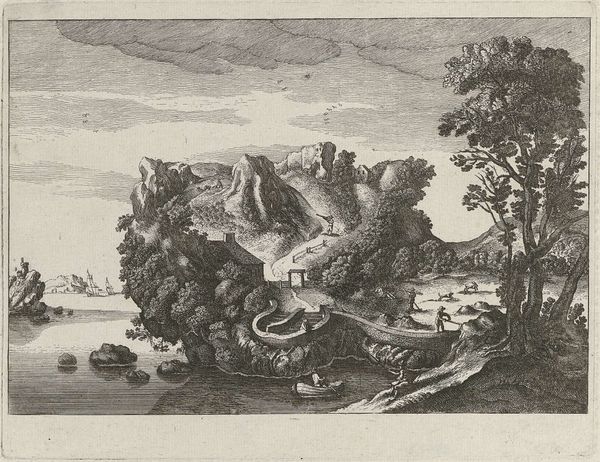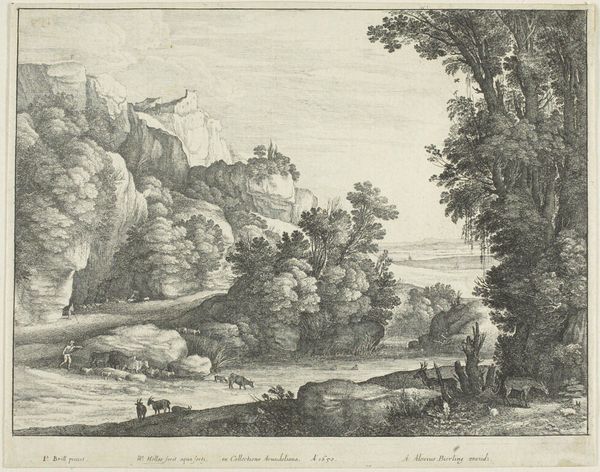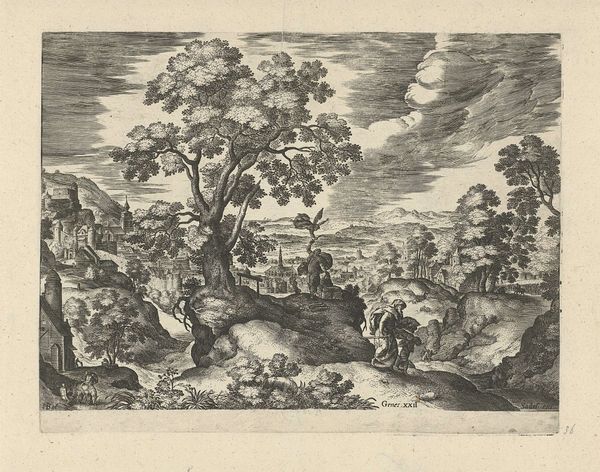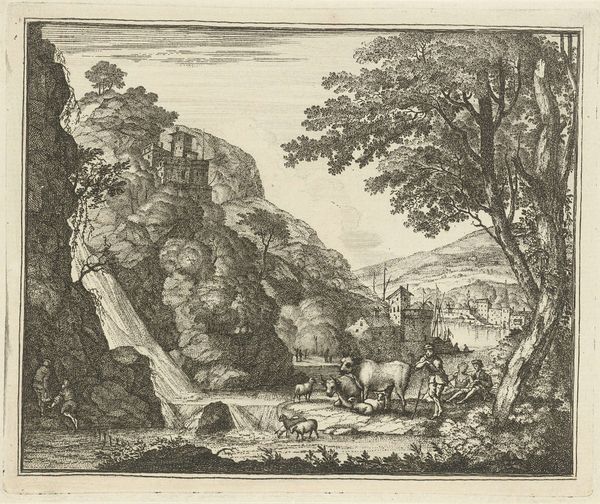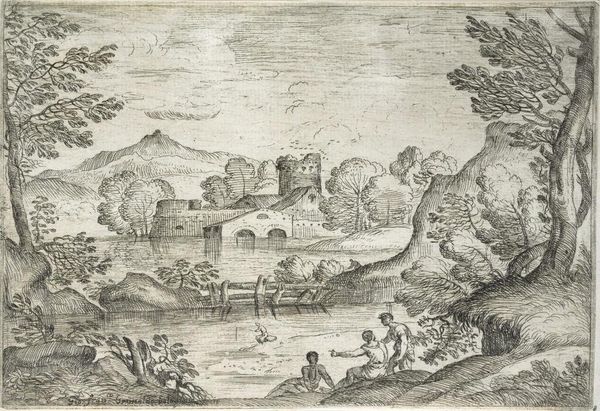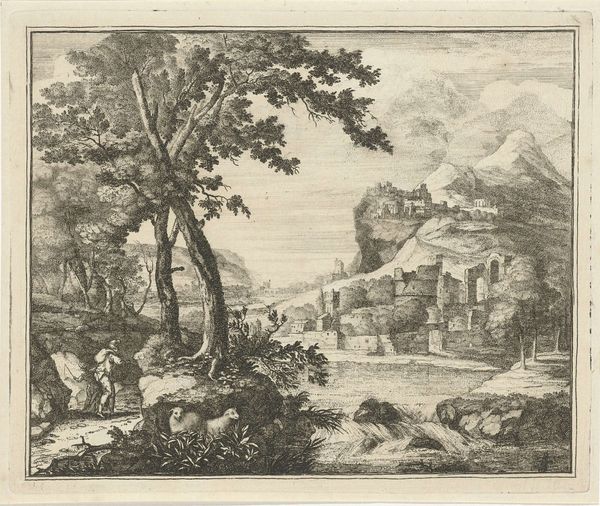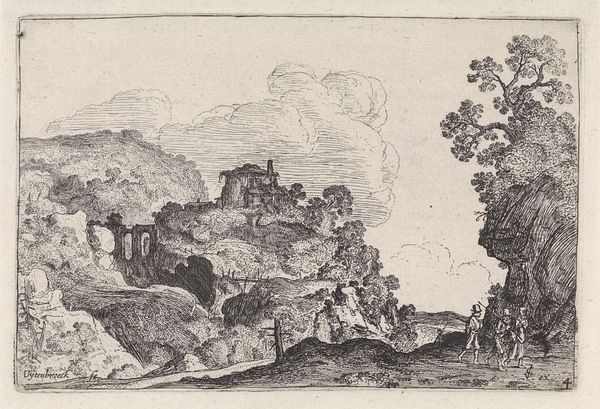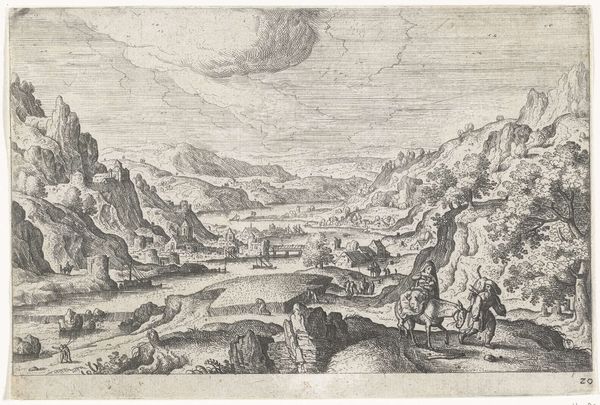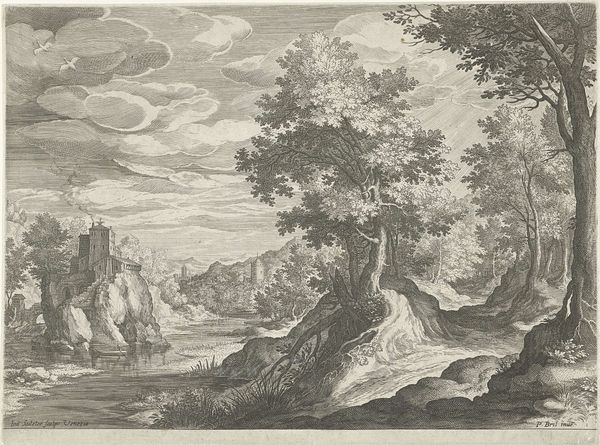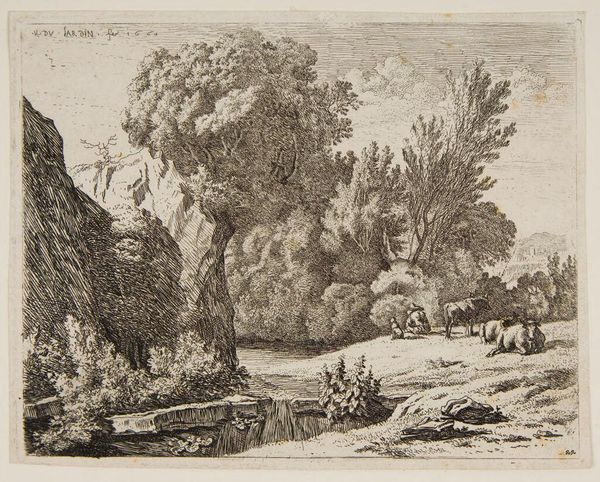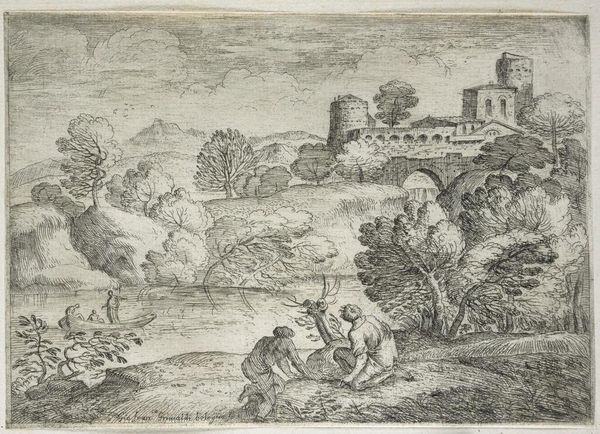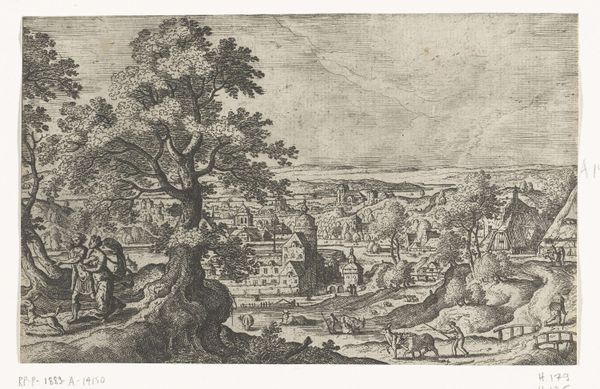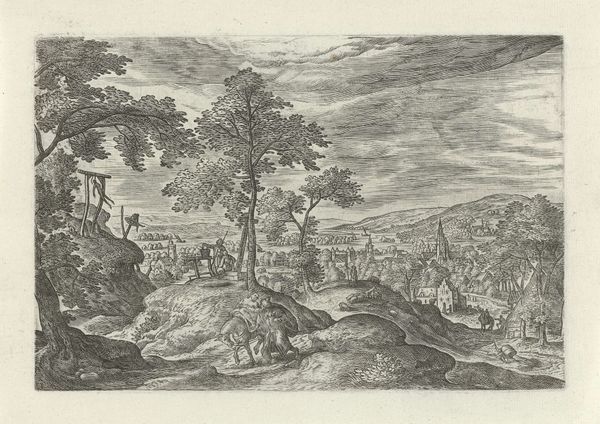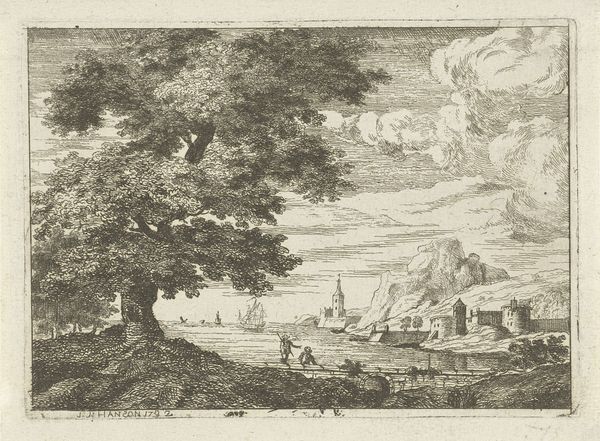
print, etching
#
baroque
# print
#
etching
#
landscape
#
fantasy-art
Dimensions: height 147 mm, width 203 mm
Copyright: Rijks Museum: Open Domain
Editor: This etching by Wenceslaus Hollar, titled "Landschap in de vorm van een mannenhoofd" – or "Landscape in the shape of a man's head," created sometime between 1625 and 1677, presents a fantastical scene. I'm immediately drawn to how the landscape cleverly composes a profile. How do you interpret the symbolic weight of this human-landscape fusion? Curator: It's fascinating, isn't it? This image speaks to the enduring human desire to find ourselves reflected in the world around us. Throughout history, from ancient mythology to Romantic poetry, the landscape has often been viewed as a mirror of the human soul. Consider the tradition of physiognomy prevalent at the time – the belief that one's character is revealed through facial features. Does this landscape-head suggest that the land itself possesses character, a soul even? Editor: That’s a really interesting point, the land possessing a soul! So, is this almost like a portrait of a place, imbuing it with personality? Curator: Precisely. Notice the tiny figures populating the landscape. Are they dwarfed by this personified land, or do they harmoniously coexist within it? This contrast raises questions about humanity's place in nature, our impact on it, and its influence on us. Editor: It’s a complex relationship he seems to be depicting. It also reminds me a little bit of Arcimboldo. Curator: Ah, a great connection! Like Arcimboldo's composite heads made of fruits and vegetables, Hollar is playing with visual wit and intellectual conceits. Both tap into a deep vein of symbolic thinking, encouraging viewers to see beyond the surface and ponder the interconnectedness of things. Editor: It really opens up so many avenues for interpretation! Seeing how it connects to ideas about humanity, nature, and even portraiture makes it far more engaging. Curator: Indeed. And that's the beauty of such a richly symbolic image; it continues to resonate across centuries. It encourages us to reflect on our own relationship with the environment and the stories we project onto it.
Comments
No comments
Be the first to comment and join the conversation on the ultimate creative platform.
